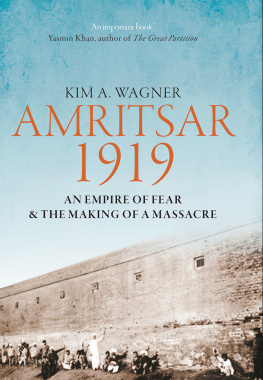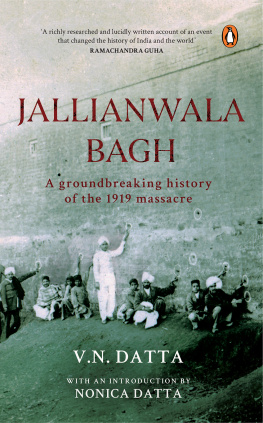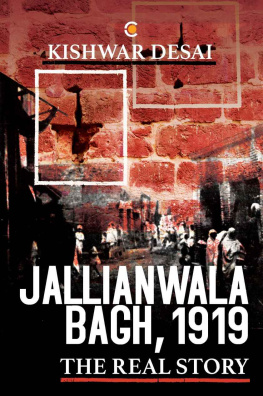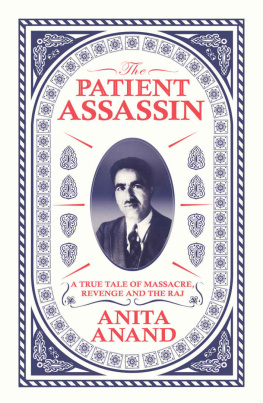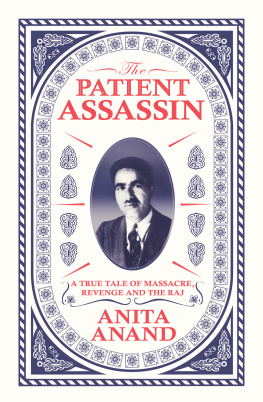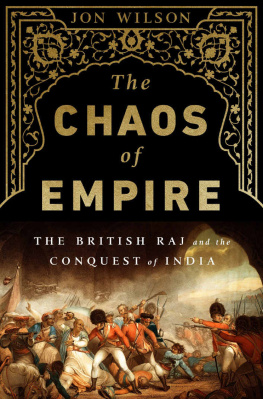AMRITSAR 1919

Copyright 2019 Kim A. Wagner
All rights reserved. This book may not be reproduced in whole or in part, in any form (beyond that copying permitted by Sections 107 and 108 of the U.S. Copyright Law and except by reviewers for the public press) without written permission from the publishers.
For information about this and other Yale University Press publications, please contact:
U.S. Office:
Europe Office:
Set in Adobe Garamond Pro by IDSUK (DataConnection) Ltd
Printed in Great Britain by Gomer Press Ltd, Llandysul, Ceredigion, Wales
Library of Congress Control Number: 2018962167
ISBN 978-0-300-20035-5
A catalogue record for this book is available from the British Library.
10 9 8 7 6 5 4 3 2 1
for Julie...
CONTENTS
PLATES AND MAPS
Plates
Maps
A NOTE ON SPELLING AND
COLONIAL SOURCES
Colonial spelling was often inconsistent and the same Indian name might thus appear in different variations in the archive and in official records. While I recognise the colonial connotations of nineteenth- and twentieth-century transliteration, I have retained the original spelling in quotes to avoid confusion and to stay as close to the primary material as possible. It should nevertheless be kept in mind that ascribed caste and religious identities were shaped by colonial taxonomies and as a result often over-simplified if not actually misleading.
INTRODUCTION

AMRITSAR 19192019
Jallianwala Bagh, Amritsar, 13 April 1919
Inside an open space, surrounded by buildings and a crumbling brick wall, a large Indian crowd of thousands has gathered around a Sikh man, who is addressing his audience from a platform. There is a small dilapidated temple within the square, as well as a few trees, and behind the rooftops the unmistakable onion-domes of a mosque can be discerned. People are mostly dressed in varying shades of white, yet the colourful turbans of the bearded men provide a stark contrast to the drab grey houses behind them. Close around the speaker, the audience is sitting down, while, on the outskirts of the crowd, people are standing or moving about and a vendor is busy peddling his wares carried on a pole across his shoulder. From the balconies of nearby houses people are watching, and a handful of boys are playing in the background. The air is filled with the low murmur of a large crowd, but the earnest words of the speaker resonate with clarity within the square:
England is so powerful its army and its navy, all its modern weapons but when a great power like that strikes defenceless people it shows its brutality, its own weakness. That is why the Mahatma begs us to take the course of non-violence.
Elsewhere in the city, an armoured car emerges from a gate, followed by a military vehicle with two British officers in pith helmets and fifty Indian troops with rifles making up the rear. The vehicles and uniforms are all in the same khaki colours, and the slouch hats and pointed turbans of the troops reveal them to be Gurkhas and Baluchis. The rumble of the engines merges with the rhythmic sound of the soldiers trotting behind the cars as the column winds its way through the narrow streets of Amritsar. The commanding officer, the broom-moustachioed General Dyer, is sitting motionless in the car, looking straight ahead, as they drive past local residents, who stop what they are doing and stare at the procession. With unerring precision, the column continues further into the city. Outside the park where the meeting is taking place, the armoured car grinds to a halt as the alley is too narrow. With great agility, General Dyer jumps down and orders the car to back away, signalling for the troops to follow him. He marches through the entrance with great determination, his horsewhip under the arm.
The speaker is still busy exhorting the crowd: If we riot, if we fight back, we become the vandals and they become the law! If we bear their blows, they are the vandals God and his law are on our The hoarse yell of orders being given, and the staccato sound of marching feet as the soldiers spill through the entrance and line up on both sides, brings the speaker to a sudden halt. Here and there, people in the crowd turn around to see what this interruption is, more curious than frightened. General Dyer is standing at ease, right in the middle with his troops to the right and left, surveying the crowd before him with a cold, unmoving, expression. More people have noticed the sudden arrival of the soldiers, and some stand up to get a better view. In place of the speech, the open space now echoes with the order to fix bayonets. The murmur of the crowd grows louder as fear grips the thousands gathered. As the first row of soldiers assumes a kneeling position, more people are getting up, visibly worried.
The speaker, with less certainty than before, continues: We must have the courage to take their anger General Dyer gives an order to the Havildar-Major, and the double-line of troops lift their rifles to take aim with one synchronised movement. By now the crowd is growing more restless and a crying baby can be heard amidst the yelling of people and the clattering of the guns. Everyone in the crowd is standing, facing the line of rifles and bayonets trained squarely at them. Dyers ADC, sweating and slightly nervous, asks his superior: Should we issue a warning, Sir? With a stern sidelong glance at his subaltern, the General replies stiffly: Theyve had their warning. No meetings. A ripple of panic spreads among the crowd, no more than a hundred feet away, as people desperately begin to push back. General Dyer barks the order: Fire!
All fifty troops fire at the same time, and the sharp report of the volley reverberates between the walls of the surrounding buildings. Shrill screams can be heard over the report of the rifles, and, as people are hit and tumble over in the dust, the crowd scatter in a chaotic stampede. As those at the front receive the brunt of the firing, and fall by the dozen, the great mass of people surge backwards and to the sides. The erratic firing continues as people run and are felled by shots, including mothers with their babies. As the troops methodically fire and load their Lee-Enfield rifles, the General calmly walks behind his men, his eyes fixed on the slaughter before him. In the chaos of the panicking crowd, the bodies are beginning to pile up. Dyer reminds his men to take their time, and as they repeat the same motions, shooting and loading, over and over, the spent cartridges fall to the ground with a chinking sound.
The open ground is now enveloped in a cloud of dust, and amidst the chaos of the dead and the dying, some are trying to carry the wounded to safety. A group of women reach an exit but find it locked by a gate with iron bars and scream in fear as those behind continue pushing. Keeping a sharp lookout, the General notices that some men are trying to scale the wall on the left and he promptly directs the fire towards them, shouting to make himself heard above the din. As the troops swing their rifles towards the wall, people are shot in the back and fall down on top of others. As the firing continues, and with the exits blocked, people are running around aimlessly, some even jumping into a large open well. As Dyer keeps watching, his face devoid of any trace of emotion, more people jump into the well to escape the bullets. Meanwhile the troops keep shooting and loading, shooting and loading, the piles of cartridges growing at their feet. The ground is littered with dead bodies, and a small girl is crying next to the bloodied corpse of her mother.
Next page
